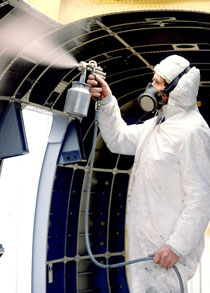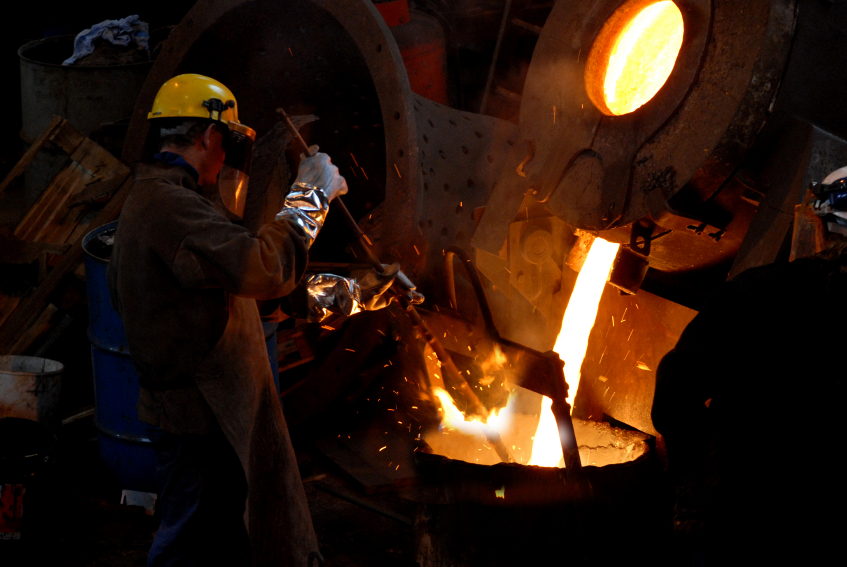SERVICES
Air Monitoring and Exposure Assessments
 Exposure assessments are used to determine the adequacy of engineering controls and work practices along with a selection of the least hazardous materials that meet performance needs. For facilities without an established process, a thorough review of Material Safety Data Sheets is usually a key part of this service. Both qualitative and quantitative methods are used. Qualitative methods alone are often sufficient without actual exposure measurements, based on contaminant characteristics, controls, proximity and duration of potential exposure. Assessments for personal protective equipment can also be a part of this process while generating the written documentation that is required by OSHA.
Exposure assessments are used to determine the adequacy of engineering controls and work practices along with a selection of the least hazardous materials that meet performance needs. For facilities without an established process, a thorough review of Material Safety Data Sheets is usually a key part of this service. Both qualitative and quantitative methods are used. Qualitative methods alone are often sufficient without actual exposure measurements, based on contaminant characteristics, controls, proximity and duration of potential exposure. Assessments for personal protective equipment can also be a part of this process while generating the written documentation that is required by OSHA.
Air Monitoring and Environment Sampling
Air monitoring and other environmental sampling methods are conducted using NIOSH and OSHA methods when available, supplemented by ASTM and other methods as necessary. Monitoring is conducted for comparison with established occupational exposure limits such as the OSHA Permissible Exposure Limits (PELs) and American Conference of Governmental Industrial Hygienists (ACGIH) Threshold Limit Values (TLVs), or employer defined limits. From the regulatory standpoint, respiratory exposure assessments are required by 1998 revisions to the OSHA respiratory protection standard. Sample analyses are obtained from laboratories accredited by the American Industrial Hygiene Association (AIHA).
Potent Compound/Active Pharmaceutical Ingredient (API) Services
 Workplace Hygiene is staffed with Certified Industrial Hygienists (CIHs) who have experience in developing sampling protocols, collecting and interpreting sampling data, managing projects, laboratory hood and local exhaust ventilation (LEV) system evaluations, surrogate testing of control device (hood) performance, and performing potent compound training in pharmaceutical facilities where highly potent compounds and cytotoxic compounds are used.
Workplace Hygiene is staffed with Certified Industrial Hygienists (CIHs) who have experience in developing sampling protocols, collecting and interpreting sampling data, managing projects, laboratory hood and local exhaust ventilation (LEV) system evaluations, surrogate testing of control device (hood) performance, and performing potent compound training in pharmaceutical facilities where highly potent compounds and cytotoxic compounds are used.
Cotton Dust
Air monitoring of cotton dust concentrations is conducted according to requirements of the OSHA Cotton Dust Standard (29CFR1910.1043). A full range of companion services, such as troubleshooting high dust concentrations, ventilation measurements, or assistance with other cotton dust program elements is also provided. Workplace Applications Software pulmonary module facilitates medical review and recordkeeping for pulmonary function test data required by the Cotton Dust Standard; we also provide medical review of the pulmonary data.
Heat Stress Monitoring
 Heat stress measurements are conducted to establish work-rest regimens for workers in hot environments when indicated. Employee acclimatization state, work demand, and clothing are factors considered in making these determinations. OSHA does not have a specific standard for heat stress but has issued citations based on Section 5 (a)(1) of the Occupational Safety and Health Act, the “General Duty Clause”.
Heat stress measurements are conducted to establish work-rest regimens for workers in hot environments when indicated. Employee acclimatization state, work demand, and clothing are factors considered in making these determinations. OSHA does not have a specific standard for heat stress but has issued citations based on Section 5 (a)(1) of the Occupational Safety and Health Act, the “General Duty Clause”.
Exposure Surveys for Metalworking Fluids with Microbial Contamination Assessments
Existing monitoring data may well overstate exposures to these compounds if both soluble and insoluble portions were not measured. This issue has gained prominence with discussion by OSHA and NIOSH considering a much lower standard for these materials than for mineral oil mist, and the realization that the oil mist standard is not sufficiently protective for many of these compounds. (Note also that ACGIH has proposed drastically lowering the TLV for mineral oil mists.) We also collect fluid samples for microbial assessment for use in the implementation of system assessment and maintenance procedures. These precautions keep microbial populations in check, and much less likely to present biological hazards associated with these systems. (Additional information about metalworking requirements from the NIOSH and OSHA Web sites.)
